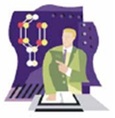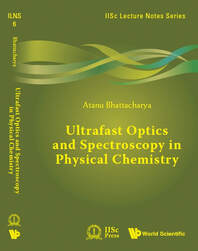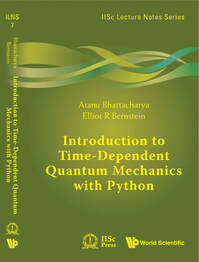|
Ultrafast Optics and Spectroscopy in Physical Chemistry
This course is an introduction to "ultrafast optics and spectroscopy" for students, who have background of chemistry or physical chemistry and who are new to the subject. Lecture notes have been prepared with the conviction that any student, even one who has never heard of the subject, should be able to learn what ultrafast spectroscopy is, why optics related to the subject requires special attention, how to use the basic ideas of the subject in laboratory based ultrafast spectroscopy experiments, and how to interpret the experimental observations, etc. |
YouTube Link for NPTEL Lectures: https://www.youtube.com/playlist?list=PLgMDNELGJ1Cb4_F7DZ9jJF5OjKLOZjRIk
|
Book Reviewed By Prof. Sivarama Krishnan (Physics, IIT-Madras) for Current Science (118, 308 (2020)):
|
| ||||||
|
Introduction to Time Dependent Quantum Mechanics using Python
This course introduces basic concepts behind time-dependent quantum mechanics revolving around the topics including time-dependent Schrodinger equation, stationary and superpositions states, Ehrenfest theorem and Bohmian mechanics, wavepacket dynamics, matrix representation of time-dependent Schrodinger equation, time evolution operator and its numerical implementation. Students get hands-on experience with Python programming to solve simple selected quantum dynamical problems. |
A Textbook Published Jointly by World Scientific and IISc Press as IISc Lecture Notes Series.
Suggested Books for Further Reading:
1. D. Tannor, Introduction to Quantum Mechanics: A Time-Dependent Perspective. 2. J. Izaac, J. Wang, Computational Quantum Mechanics (Python). |
YouTube Link for NPTEL Lectures: https://www.youtube.com/playlist?list=PLgMDNELGJ1Cbtd5MIUWUHvasydy7evigA
|
Quantum Chemistry on Quantum Computer
This is an introductory course (under formulation) for undergraduate and graduate chemistry students who would like to learn basic quantum computing and its chemical applications. Fundamental concepts of quantum computing including qubit, Bloch sphere, superposition state, wavefunction collapse, etc. are discussed in conjunction with Qiskit to perform quantum chemical calculations in IBM Quantum Computing Lab. |
Lecture notes are currently under formulation in collaboration with IBM-India Quantum Computing Team. one can read (incomplete) lecture notes by downloading the pdf
Suggested Books for Further Reading:
This is an evolving subject and (personal opinion) not a single text book suitable for students with chemistry background. However, following texts may of some help: 1. Kassal et al., Simulating Chemistry using Quantum Computers, Annual Review of Physical Chemistry, 62, 185-207 (2011). 2. |
|
Developing Experimental Skills in Physical Chemistry
This is an introductory course (under formulation) for undergraduate and PhD students who want to take up experimental physical chemistry as their research area. What do we need to learn in order to build a PChem apparatus? Programming, Mechanical Design, Vacuum System Design, Ion Optics Design, Optical Design, Electronics, LabVIEW, Data Acquisition, Error Analysis? Some of the answers and methodologies can be found in this course. |
Lecture notes are currently under formulation; however, one can read (incomplete) lecture notes by downloading the pdf.
Suggested Books for Further Reading:
1. J. H. Moore, C. C. Davis, M. A. Coplan, S. C. Greer, Building Scientific Apparatus. 2. J. Essick, Hands-on Introduction to Labview for Scientist and Engineers 3. W. R. Leo, Techniques for Nuclear and Particle Physics Experiments | ||||||
|
Attosecond Dynamics in Physical Chemistry
This is a very focused subject for new students who want to know chemical dynamics which occurs in attosecond time domain. High harmonic generation is the source of laboratory attosecond spectroscopy. This is why theoretical and experimental aspects of high harmonic generation process are discussed. |
Incomplete manuscript can be read by downloading the pdf file.
Suggested Books for Further Reading:
1. Z. Chang, Fundamentals of Attosecond Optics. 2. T. Schultz, M. Vrakking, Attosecond and XUV Physics: Ultrafast Dynamics and Spectroscopy. 3. M. J. J. Vrakking, F. Lepine, Attosecond Molecular Dynamics, RSC Publishing | ||||||
|
Class VIII Lecture Notes (in Bengali)
Class VIII science lectures (in Bengali) can be downloaded from here. |
Lectures notes are prepared taking inspiration from NCERT school textbooks.
| ||||||
|
Class VII Lecture Notes (in Bengali)
Class VII science lectures (in Bengali) can be downloaded from here. |
| ||||||||||||



